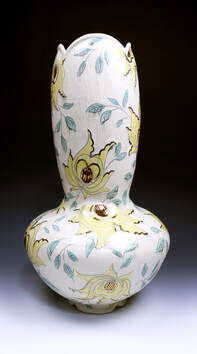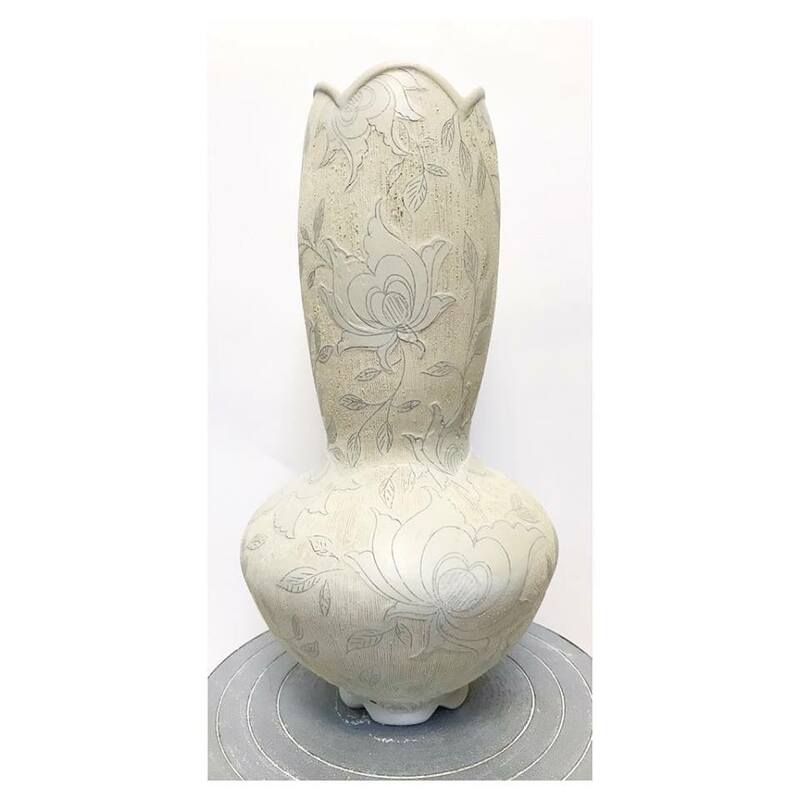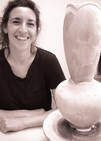|
It has been quite some time since my last blog, so I wanted to share with you some of my latest work and the research that has contributed to it. My previous body of work used narrative of the dog and human relationship to communicate the internal sense of belonging and comfort formed through companionship. I have begun a new series of work in which I am exploring form and volume, as well as emphasizing surface with low relief patterns and texture. By researching decorative ceramics throughout history and examining the patterns chosen I am learning ways that layers of pattern call attention to the form, provide direction, and possess a visual softness and physical depth. I began reading the Language of Ornament and it has helped me to understand the history of decorative art and objects as well as how to talk about my own work and need to fill a surface with pattern. Ornamentation is defined as "the elaboration of functionally complete objects for the sake of visual pleasure" and talks about how ironic it is that our embrace of form without the guidance of content overlapped with our rejection of ornament. But it is ornamentation that most teaches us the appreciation of form! This statement encouraged me to really focus on my forms and investigate how the patterns I paint on them can contribute and emphasize the shape, volume, and breath of each piece I make. This book has also encouraged me to recognize how I reconnected with my love of making objects that reference use and function. I have always found joy in making objects, even as a child. I also discovered a love of taking time for them and hand painting every single detail. From a maker's standpoint, this book talks about how ornamentation means a new approach to materials and techniques, a profound level of control, and how as the artist we gain a new understanding of the relation between functional and decorative form. Through this work I've given myself the challenge to do just that. I chose to make this work as an exploration outside of the canine character in an effort to express ideas of comfort and joy through form, pattern, and surface. How does this work provide a joyful and individual experience for the viewer or user? And how do the patterns I paint, the materials I use, and the techniques in which I apply them interact in a way that emphasizes its form, its breath, and its presence?
|
|






 RSS Feed
RSS Feed